Pear variety Hera
Gera is a pear with fruits of early winter ripening period, bred at the All-Russian Research Institute of Genetics and Breeding of Fruit Plants named after V.I. I.V. Michurina by hybridization of 2 varieties - Daughter of the Dawn x Reale Turinskaya. The authorship is assigned to S.P. Yakovlev, A.P. Gribanovsky, N.I. Saveliev and M.Yu. Akimov. The variety is on the State test.
The trees are medium-sized, the crown is sparse, compact, narrow-pyramidal in shape. This pear is characterized by a mixed type of fruiting.
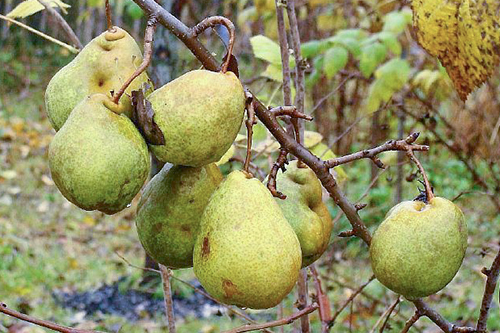
Shoots are medium in thickness, straight, lint-free, brown colored. Lentils are few in number. The buds are medium in size, rounded, adpressed, with a smooth surface. The leaves are green, medium-sized, oval, wide, short-pointed, with finely serrated serration along the edge. The lamina is smooth, glossy, curved upward. Petioles glabrous, medium in thickness and length.
The fruits of the Hera pear are large in size (weight ranges from 175 to 210 grams), regular wide pear-shaped, with a smooth surface. The skin is of medium thickness, dry, covered with a rusty mesh. At the moment of ripening, the main color of the fruit is green, the integumentary color is expressed on a smaller part of the pear through a red blush. In the period of consumer maturity, the main color of the fruit is lighter, greenish, the integumentary color also occupies an insignificant part of the fruit and acquires a pinkish tint. Peduncles of medium length and thickness, set at an angle (i.e. obliquely). The funnel is very small, with medium rustiness or absent. The cup is open, non-falling. The saucer is medium in size, narrow in shape. The heart is medium in size, round in shape. The seed chambers are medium, closed. Seeds are medium in size, conical in shape, brown in color.
The pulp is cream colored, fine-grained, semi-oily, medium density, slightly granular in consistency, juicy, tender, sour-sweet in taste, and weak aroma. According to the tasting scale, the taste of the Gera variety is estimated at 4.3 points out of the maximum possible 5.
By chemical composition, the fruits contain: dry soluble substances (14.5%), the amount of sugars (9.6%), titratable acids (0.4%), ascorbic acid (8.8 mg / 100 g), P-active substances (86.0 mg / 100 g).
The time for removable maturity falls on the second decade of September. The potability of the variety is high: in a refrigerated fruit storage, pears are stored for up to 5 months (150 - 160 days).
The early maturity is good: the trees bear fruit from the 4th - 5th year. The yield is high. Winter hardiness is relatively high. In the conditions of artificial freezing of trees in the middle of the winter period at the lowest possible temperature of minus 38 ° C, the tissues of annual branches froze up to 1.8 points. The variety is highly resistant to scab, septoria and entomosporiosis.
The obvious advantages of the Gera pear include its complex resistance to diseases, good winter hardiness and productivity, compact crown size.
The main disadvantage of the variety is that if optimal storage conditions are violated, darkening of the fruit can be observed.

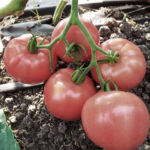
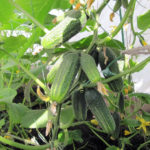
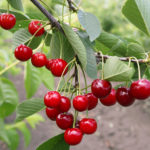
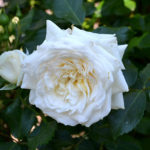
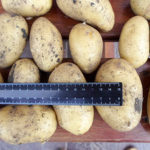



Please write if the Hera pear variety needs pollinators. If so, which pollinator varieties are needed?
Hera appeared in my mother's garden relatively recently - 10 - 11 years ago. The seedling was taken from the nursery already grafted. The tree bears fruit for the last 4 years. Moreover, it bears fruit annually, but with different intensity: the year is strong, the next is weak. Before it began to bear fruit, the tree showed surprisingly strong growth. At first I even doubted that it was Hera, because This variety is characterized by medium height, and the pearl shoots are very tall! And no matter how hard I tried, it didn't work out to make a spreading stem. Crohn remained narrow pyramidal.
But after the beginning of fruiting, the growth of the tree slowed down greatly. It is not surprising - all the strength goes into the fruit. The tree blooms amicably and usually abundantly. All branches are simply hung with pears, and as they ripen, they begin to break the bitches. So pity! And it is often problematic to put props - the crown is narrow and the branches go vertically.
Pears begin to ripen in September. Well, how to ripen ... The aroma begins to appear in them. By the end of September - beginning of October, the fruits begin to ripen well. Ripe pears have a yellowish skin with a pink barrel in the sun. They always remain strong and do not sag like many early varieties. This is what I like about them. I don’t like the pears! The fruits are fragrant, juicy. Hard grains in the pulp are rare.
We haven’t tried to remove the fruits for storage in large volumes (I eat a lot), and those that were laid were lying for a while. They begin to wilt quickly, if not very cold, but do not rot. I am not delighted with sluggish pears, so I cannot describe the taste.